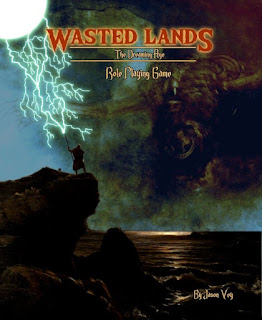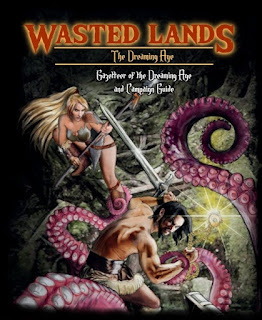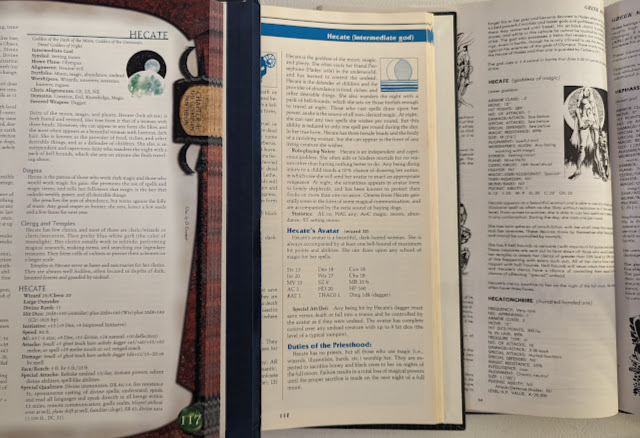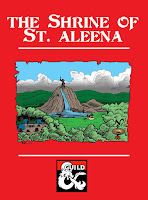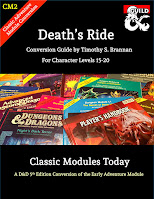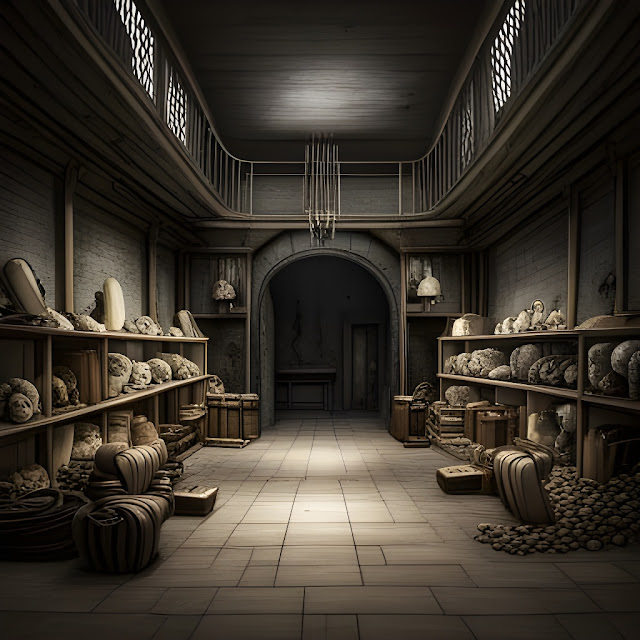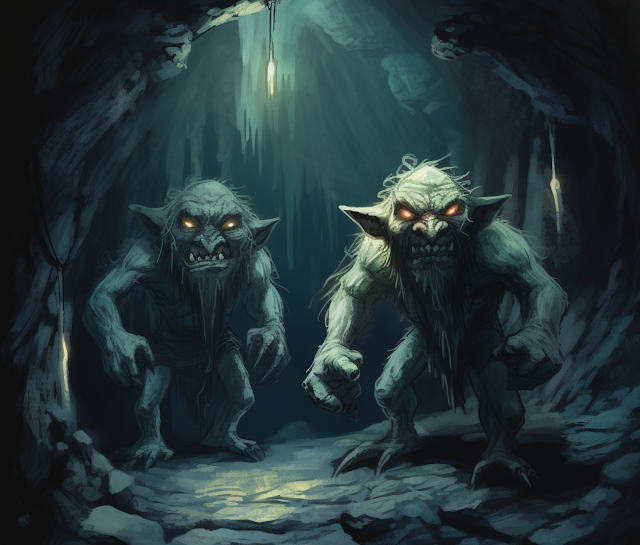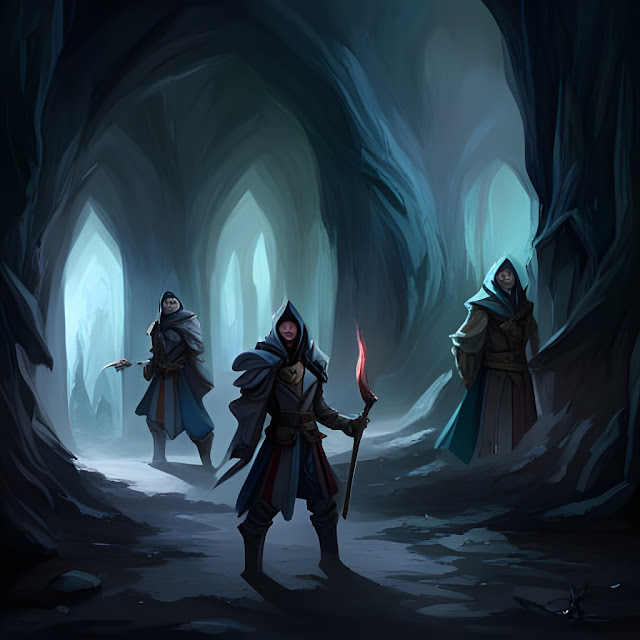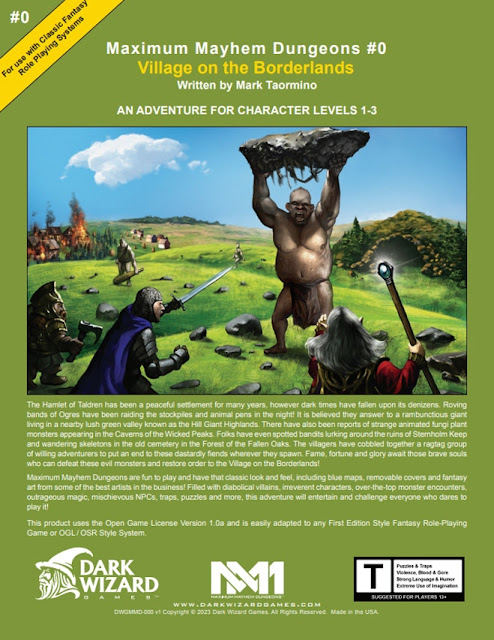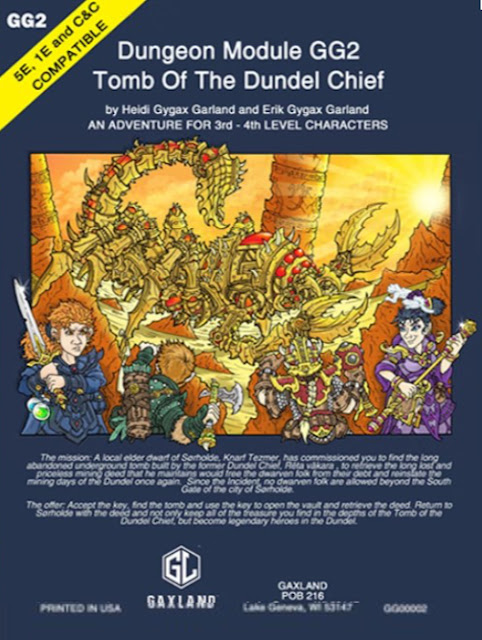Friday Fantasy: Roll & Play
 There are plenty of books of tables containing random content for the roleplaying genre of your choice. Peruse the pages of DriveThruRPG or the Dungeon Masters Guild and the Game Master will find no end of books of tables of random content. Encounters down a dungeon or in any terrain the Game Master cares to name. Treasures big and small to be found in dungeons or the possession of various monsters. Treasure magical and non-magical. Potions. Jewellery. More encounters. Swords. NPCs. Other weapons. Critical hits and fumbles. Plot hooks. Encounters again. You name it and there is probably a table for it. In most cases, the entries on all of these tables provide the barest of details. Some entries can be quite detailed, but in the main, two or three lines at the very most. This is because those entries are setting out to do two things. These are to provide the maximum amount of information possible in the quickest amount of time possible and to provide the amount of inspiration possible in the quickest amount of time possible. For example, a description of a magical sword would describe its magical effects and bonuses and might describe a little of its background or previous owners or even what the sword wants. Whereas the inspiration might be as simple as a name and occupation and appearance plus a quirk and more. Roll & Play: The Game Master’s Fantasy Toolkit does a bit of both.
There are plenty of books of tables containing random content for the roleplaying genre of your choice. Peruse the pages of DriveThruRPG or the Dungeon Masters Guild and the Game Master will find no end of books of tables of random content. Encounters down a dungeon or in any terrain the Game Master cares to name. Treasures big and small to be found in dungeons or the possession of various monsters. Treasure magical and non-magical. Potions. Jewellery. More encounters. Swords. NPCs. Other weapons. Critical hits and fumbles. Plot hooks. Encounters again. You name it and there is probably a table for it. In most cases, the entries on all of these tables provide the barest of details. Some entries can be quite detailed, but in the main, two or three lines at the very most. This is because those entries are setting out to do two things. These are to provide the maximum amount of information possible in the quickest amount of time possible and to provide the amount of inspiration possible in the quickest amount of time possible. For example, a description of a magical sword would describe its magical effects and bonuses and might describe a little of its background or previous owners or even what the sword wants. Whereas the inspiration might be as simple as a name and occupation and appearance plus a quirk and more. Roll & Play: The Game Master’s Fantasy Toolkit does a bit of both. The Roll & Play: The Game Master’s Fantasy Toolkit won the Silver Ennie for Best Aid/Accessory – Non – Digital for 2021. Published by Roll & Play Press following a successful Kickstarter campaign is designed to be used with any fantasy roleplaying game, but especially those inspired by Dungeons & Dragons. So obviously Dungeons & Dragons, Fifth Edition, and then Pathfinder, but also any fantasy retroclone of the Game Master’s choice. No matter what the choice of fantasy roleplaying game, the Roll & Play: The Game Master’s Fantasy Toolkit is completely systemless and contains not a single stat. All the Game Master will need is a standard set of polyhedral dice and a notebook to record any details as necessary.
Notably, the is designed to be used at the table and probably behind a Game Master’s shield. To do this, it is digest sized, the layout is clean and tidy, it colourful—but not too colourful, and overall, is easy to read. In addition, it is also spiral bound. Consequently, it sit open and flat on the table or be folded over so that one page is visible and the book still lie flat. In the case of the latter, it means that the book does not take up a lot of space behind the screen. The Roll & Play: The Game Master’s Fantasy Toolkit is also produced on a glossy paper stock, which together with its relatively small size means that the book is readily portable and will withstand the travails of being carried from one gaming session to the next.
So, what of the content? The Roll & Play: The Game Master’s Fantasy Toolkit is divided into five chapters—‘People and Quests’, ‘World Building’, ‘Journeys and Events’, ‘Combat and Injuries’, and ‘Items and Rewards’. All of the tables are easy to use. Turn to the right chapter, select the right table, and starting rolling. It is as simple as that and very quickly, the Game Master can adding details to and building the world around her Player Characters. So, if they enter a town and approach a random NPC, the Game Master rolls on the ‘Common Names’ table in the ‘People and Quests’ chapter. His name is Boris. A roll on the ‘Behaviour and Traits’ table indicates Boris ‘Barks orders at people they see as less import than themselves’ and ‘Their nose has clearly been broken multiple times’ from the ‘Appearance Features’ table. Already we are getting a picture of the man. Boris is a common villager and a roll on the ‘Common Villager Work’ table indicates that he ‘Washes carts and caravans’. So, in addition to Boris not being the most pleasant of characters, the Game Master knows that he lives in a town where there are lots of carts and caravans moving through, and that since they need cleaning, the region is prone to either dust or mud or even that there is a local ordinance about keeping such vehicles clean! Having established this, the Game Master could then switch to ‘World Building’ and begin rolling for details about the town and its economy, government, local attractions or features, rumours and gossip, and so on. Now of course, this can be done at the table during play with a quick roll of the dice or the rolls could be made beforehand should the Game Master want to have some elements either prepared or simply want to peruse the various tables for inspiration.
Of course, the Roll & Play: The Game Master’s Fantasy Toolkit also contains tables that are specific to particular points during play. Mostly obviously, the ‘Combat and Injuries’ chapter. There are ‘Critical hit, with overwhelming force!’ and ‘Critical miss, with overwhelming stupidity!’ tables, and then similar tables for both ranged combat and magic, plus tables of lasting injuries, side effects upon revival (if reduced to zero Hit Points or even rendered dead), and much more. Following that in ‘Items & Rewards’ chapter there are ideas for various items both magical and mundane, including ‘Moderately magical things’ like a ‘Small wooden sphere that tastes like delicious caramel ice cream’* or a Notebook with an unlimited number of pages, but always turns to the page the writer wants to see’. There are tables for magical flaws and a wide range of alchemical components, but alongside these is table of ‘Bargain Spell Scrolls’ which should inspire the Game Master to create more, plus table for books and novels, loot of all kinds—including the mandatory, ‘I loot the body, what do I find?’ table, and other items and objects that an adventuring party might find in a dungeon or lair.
* No, I am not thinking about who has been sucking it previously.
The Roll & Play: The Game Master’s Fantasy Toolkit contains just a little more than the tables. There are notes on how to use the tables and their content. For example, combining the ‘Bounty Posters’ table with the various name tables earlier in the book. There are notes too on the various environments that the Player Characters might explore, such as the heat and cold of the desert day and night under the ‘Desert encounters’ table. These though are very light and kept to a minimum.
Of course, not every entry in the multiple tables found throughout the pages of the Roll & Play: The Game Master’s Fantasy Toolkit is going to be wholly original, especially if the Game Master has been playing for a while. After all, creating hundreds of entries for all of the tables in the book took a lot of effort and even if an interesting is familiar, what the Game Master does with it and how her Player Characters interact with it, is what will make it interesting. Plus, there is plenty that is interesting and thus plenty that is going to inspire the Game Master with a dice roll or two. Overall, the Roll & Play: The Game Master’s Fantasy Toolkit is a very handy book of inspiration and ideas, whether before a game or during, whose format makes it unobtrusive and easy to use.
